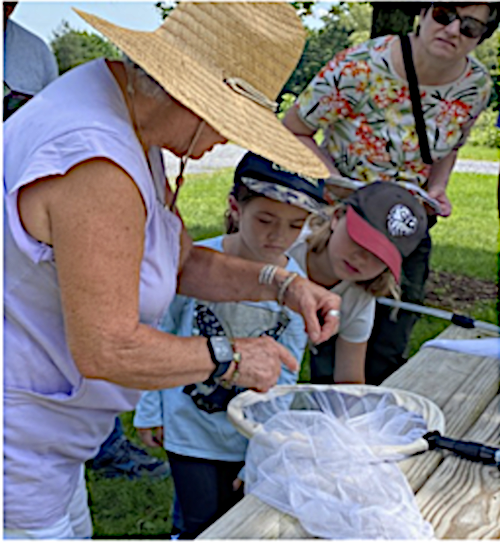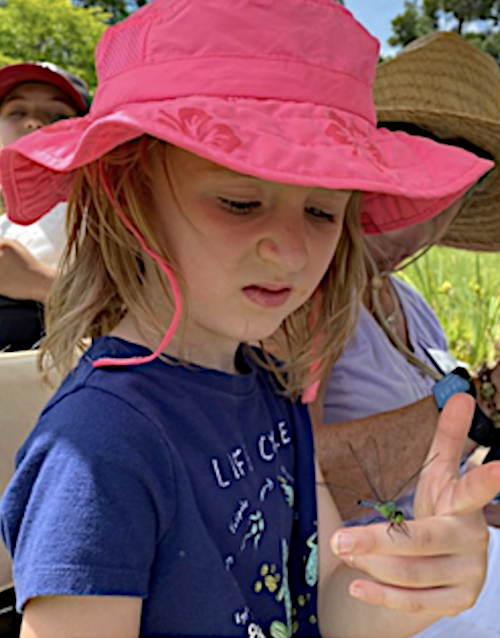In 2007 and 2008, Anne was trained and participated in the NYS Dragonfly and Damselfly Survey, which documented the distribution of all Odonata species in NY. These data in turn were to be used in the development of the Comprehensive Wildlife Conservation Strategy for New York State.
After her retirement in 2006, Anne began volunteering at the Landis Arboretum. Throughout her tenure as a volunteer, Anne has worked pretty much every job at the Arb at one time or another. Now, she coordinates the volunteers. Anne started giving classes in 2009.
“I love teaching and the Arboretum,” Anne said.

During the class, which takes place every summer, participants received a diagram which aided in identifying the difference between a dragonfly and damselfly. Anne also had books that were handy for identification. She explained that although both insects are of the taxonomic order Odonata, differences -- such as how they hold their wings at rest -- can help you distinguish them. Dragonflies hold their wings horizontally, perpendicular to their body, while damselflies wings are held along their body at rest.
“Go to the pond, stand very still, and get your eyes used to it,” Anne told the group as they anxiously awaited making their first catch.
Sisters Millie and Kensi Browning were experienced at catching insects. Their nets quickly swooped between the cattails that lined the pond.
Laurel Tormey of Altamont caught a damselfly that Anne was able to identify as a blue-fronted dancer.
“I’ve been wanting to learn about dragonflies. I’ve tried on my own, but then I decided to come here,” Laurel said.
Anne sat on a picnic table as participants brought their catches over for her to help identify. After catching and releasing many dragonflies and damselflies, the group walked over to explore a new location—the Willow Pond.

The class brought Amanda Wyckoff and her family of East Berne to the Arboretum for the first time.
“My mother said ‘let’s go’. We’ve never went to something like this before,” Amanda said.
Sandy Tasse also brought her kids to the class. Ayrton and Miranda Tasse could be seen standing near the edge of the pond, intently watching their surroundings to make their next catch.
“We came two years ago because my daughter really likes bugs, so we drove an hour here to come back,” Sandy said.
Participants spent approximately two hours catching and learning about dragonflies and damselflies. By the end of the class, the same children who were quiet strangers before the event could be seen frolicking with new friends, nets in hand.
“I’ve done several classes, but this is my favorite,” Anne said. “Especially if I get kids to participate!”
